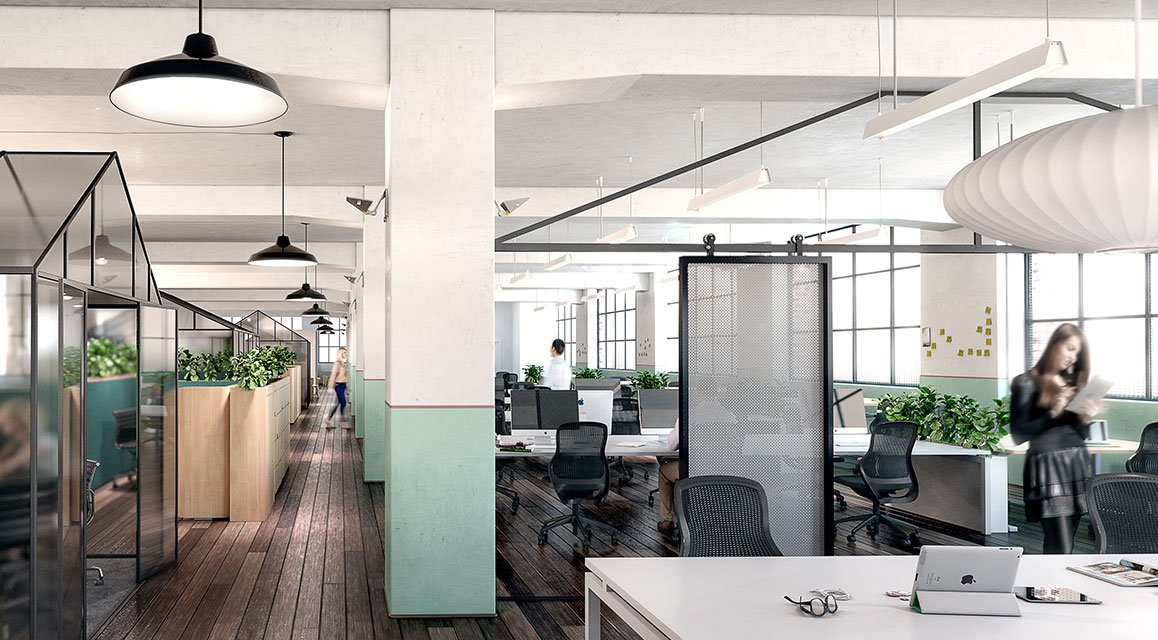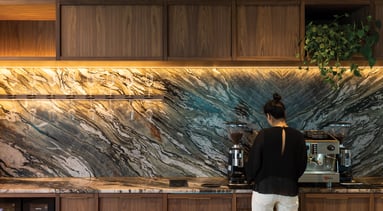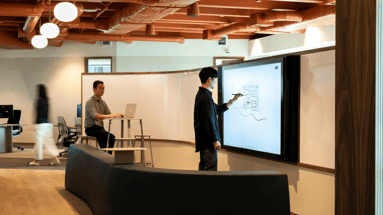Strategies for a hybrid workplace

Strategies to redesign the remote and hybrid work environment with your people in mind: a CoreNet Global Report Series
What do today’s workers really need from their work environments? In a CoreNet Global webinar Albert De Plazaola, Senior Principal Strategy, Americas spoke alongside Wendy Heller (Deloitte) and Roberta Sydney (Locatee) to share their insights about creating experiential spaces and hybrid work strategies.
Today’s reality of a pandemic-influenced work environment and the uncertainty surrounding return to office plans has caused organizations to question how to best support their employees in the office and at home whilst achieving their business goals.Top six workplace design strategies:
- Equitable experiences regardless of where employees choose to work
- Diverse options that allow workers to choose where they want to work, whether that is at home, or in the office in a huddle room or a collaborative workspace
- Flexibility and agility -- being quick to adapt to the ever-changing demands of employees
- Connectivity implementing necessary technology to keep remote workers engaged and connected with those in the physical office
- Listening to what people want, and understanding that their needs and preferences are reflective of their well-being
- No cookie cutter solutions – considering the type of work being done, company culture, and characteristics of the individual organization and their workforce
Transforming the workplace
Prior to the pandemic, only a small proportion of office workers worked remotely. Today, research suggests only 40% of people want to come back to the physical workplace full-time. Those organizations that are focusing on building hybrid strategies are becoming more attractive to potential employees as well as existing ones. A big part of this is providing the right technology. In order to have a seamless integration between the workplace and home-office companies need to make sure that technology is incorporated into the overall space design and is not an add-on. Wendy Heller from Deloitte noted “The idea that you must be in the office in-person to create culture, is something that generationally is going to shift.” Therefore, companies that are dedicating their strategies to developing hybrid working need to make deliberate changes.
"When returning to the office, this means there will be less demand for isolated and designated spaces where workplace strategies will no longer “underestimate the ability for design to encourage DEIB – whether it’s a nudge design or universal design,” said Albert DePlazaola.
Supporting a hybrid workplace
Finally, the panel discussed one of the most important factors to the future of the work environment: how can organizations best support their remote workers?
The answer? Acknowledging that hybrid work models are here to stay, and planning for a long-term, flexible, transition to a work environment that has been redefined.
People have proven during Covid-19 that they can be productive and work successfully at home.
"So, if people are coming into the office, it is no longer about me space and the heads-down focus space,” points out Albert.
To view the full report, CoreNet members can view here.


